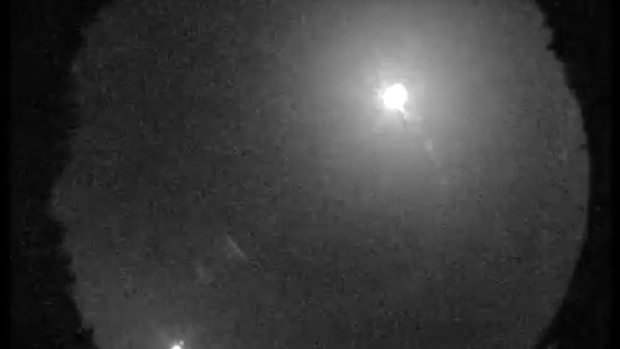Researchers at the University of Alberta are still searching for meteorites from the fireball that lit up Edmonton skies on Aug. 31.
A bright sight to behold, many people either saw the fireball or captured footage of the event on their home doorbell cameras. Now, using data from a University of Alberta all sky network camera at Lakeland College, triangulated with a spectacular image from photographer Shane Turgeon who happened to be out photographing the northern lights, and—verified by other photos from the public—scientists have verified with almost pinpoint accuracy the trajectory of the fireball, along with the potential area where any meteorites associated with the event may have fallen.
The calculations were done by researchers at Curtin University in Perth, Australia, as part of the Global Fireball Observatory. The fireball ended 20 km above Camrose, which explains some reports of a sonic boom by residents of the area.
However, in spite of hours of exhaustive searching in the fall zone just south of Camrose, Alberta, no meteorites have yet been recovered.
“While we haven’t found any meteorites yet, we are confident that they are out there,” explainedChris Herd, professor in theDepartment of Earth and Atmospheric Sciences and curator of theUniversity of Alberta Meteorite Collection. “Estimates of the amount of meteorite material that reached the ground is in the range of only about 1 kg. But it might be hiding in farmers fields, which we cannot get to yet.” Crops are late this year because of the wet summer, so it could be a few weeks before more searching can take place.
But before you set off on a meteorite hunting expedition of your own, there’s a few things you need to know: meteorites belong to the landowner. Any meteorites found on public right of ways —such as along roads—belong to the finder, although researchers at the University of Alberta are keen to study meteorites from this event.
“Every newly fallen meteorite is like a spacecraft bringing a sample back from an asteroid or another planet. It’s a chance to study a nearly pristine sample from space,” explains Herd.















